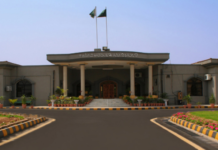BEIJING: India has not only threatened the peace and stability in the region around Pangong Tso lake by inciting frequent tussles along the lakeshore, it is also threatening the unique ecosystem of the high-altitude, 134 kilometer-long lake that forms part of the border between China and India. A research paper recently released by the National Center for Microbial Resource-National Center for Cell Science, a national facility funded by the Department of Biotechnology and Government of India, shows increased human activities, especially from tourists staying in the villages near Pangong Tso, has led to an influx of nutrients allowing bacteria to prosper, according to a report published by Global Times on Friday. The relative abundance of Enterobacter – natural residents of the human intestinal tract, soil, water, animals and plants in the lake is the cause of various hospital-acquired infections in immunocompromised patients, the research shows. A reporter found that at the village of Maan, many tents near the lakeshore are accommodation for about 10,000 people.
Praveen Rahi, a researcher fellow from the center, told the Global Times that the sample collected for this study was done in August 2016, when there was less militarization in the region.
But militarization has recently increased in response to the escalation of tension on the Line of Actual Control (LAC). The study provides baseline information, which will be useful for future studies, Rahi said. India has a significant and growing military presence near Pangong Tso, the middle of which forms the LAC. The lake is 5 kilometers wide at its broadest point and around 68 percent of the lake is on the Chinese side.
According to commercial satellite imagery, military facilities including buildings and roads have been built and expanded on the Indian side over the past few years, indicating increased military activities.One example of this is what the Indians call the “Finger 3” on the northern shore of Pangong Tso lake, which is a military camp that started construction around 2013 and 2014 and has expanded since then.
In late 2016 to early 2017, huge letters spelling “ITBP,” the acronym for Indo Tibetan Border Police, were painted on a mountain near the site. Indian facilities were also seen near the “Finger 4” in satellite images in June 2020, while none were seen in 2019.
Human activities on the Indian side of the high-altitude saltwater body raised concerns not only among the country’s bacterial study community, but also diplomatic and environmental protection experts in China, who worry that the worsening situation may harm the lake’s pristine ecosystem and possibly wreck China’s efforts in protecting the lake.
The Indian government is being urged to do much more to protect the lake’s ecosystem and to take appropriate action to dispose of human waste.
Pangong Tso lake is the pearl of the plateau and its ecology is very fragile. Even though there is no environmental protection agreement between India and China, and the confrontation between the two sides along the border is ongoing, India should pay great importance to environmental protection of the lake, Zhao Gancheng, director of the Center for Asia-Pacific Studies at the Shanghai Institute for International Studies, said.
Hou Juzhi, a research fellow from the Chinese Academy of Sciences, told the Global Times that he has been studying the Pangong Tso lake since 2010 and has witnessed a rise water level which has been caused by climate change and melting glaciers.
The water quality of the lake on the Chinese side has so far not shown major changes.Hou is a team member of the second scientific expedition to the Qinghai-Tibet Plateau and has been conducting research on the lake sediments to learn about the lake’s climate, environment and ecological changes over the last 200 years.
According to Hou, Chinese research teams have been paying great attention to environmental protection during field surveys. For example, they collected garbage and disposed of it in the nearby county’s trash cans.
“Ritu county is the closest county to the Pangong Tso lake, some 12 kilometers away, and it has established sound waste cycling facilities,” Hou said.
Pangong Tso lake’s physical-chemical properties on the Chinese side are different from the Indian side as the lake’s waters to the east in China are fresh water and drinkable, said Hou.
He’s worried ecological damage brought by human activities in India due to militarization and tourism will jeopardize efforts the Chinese government has made to protect the lake.
Pangong Tso lake on the Chinese side is the highest bird sanctuary in the world, where more than a dozen species of state-level protected animals live, such as black-necked cranes, Tibetan gazelle, brown-headed gulls and Schizothorax.
To protect the clean water and beautiful shore, China established a wetland nature reserve in 2002, the Pangong Lake National Forest Park in 2004, and the Nature Reserve Management Agency in 2007. Local farmers and herdsmen were hired to regularly patrol the lake to stop illegal fishing and the theft of bird’s eggs.
According to media report, the implementation of a series of measures, such as routine patrols, ecological protection and restoration projects, has significantly improved the quality of water, air, soil and vegetation of the lake and its surrounding areas.



